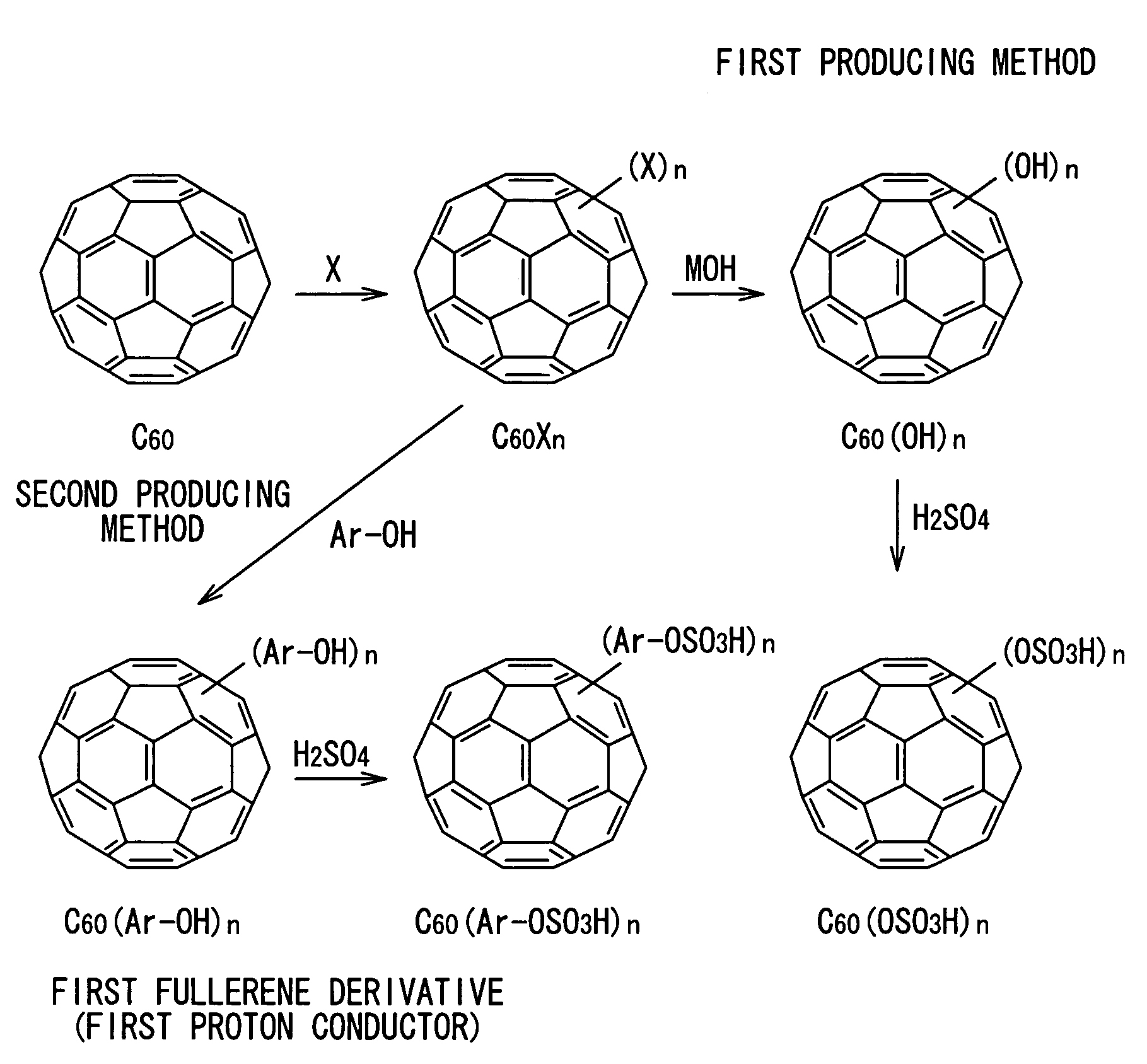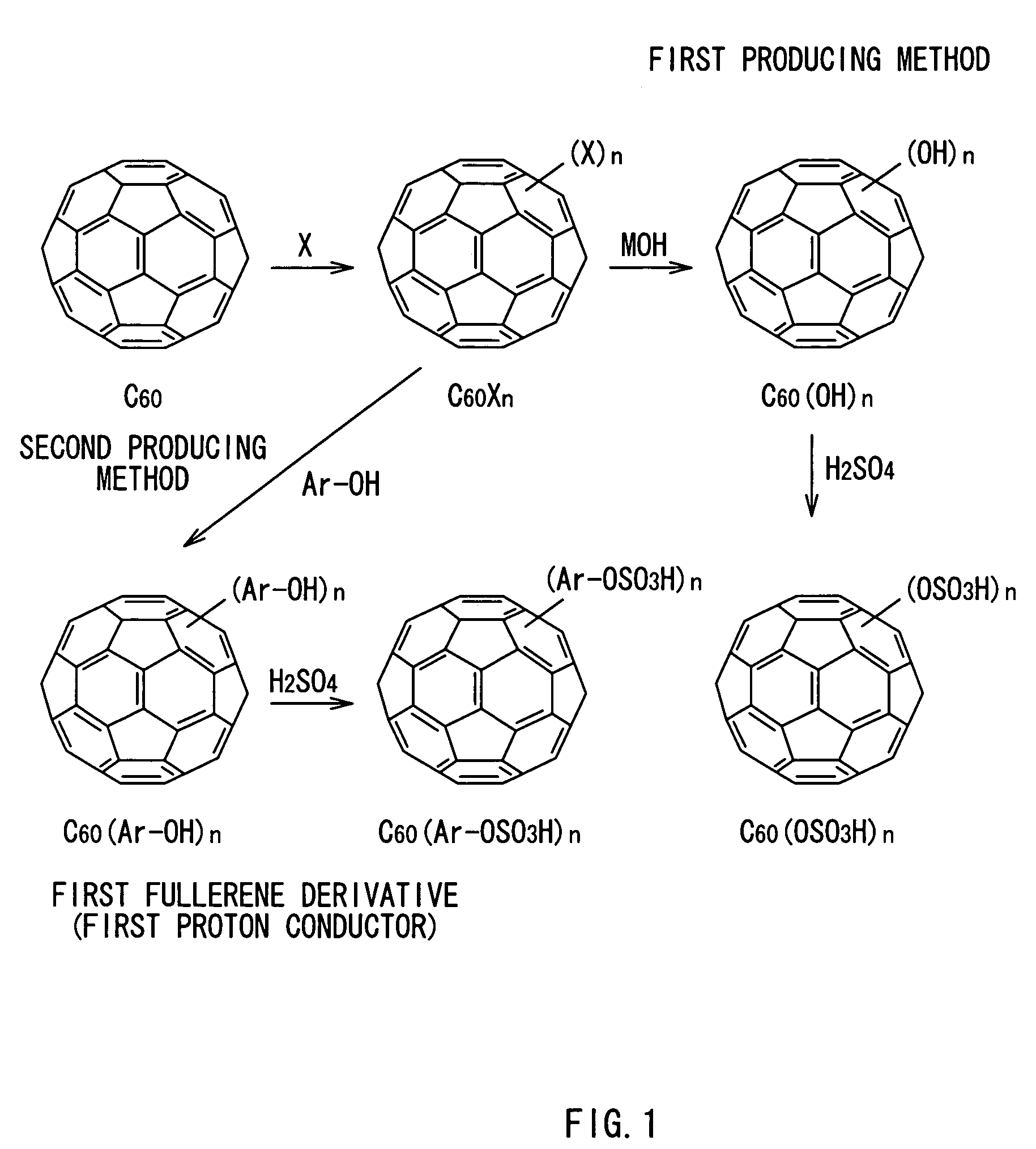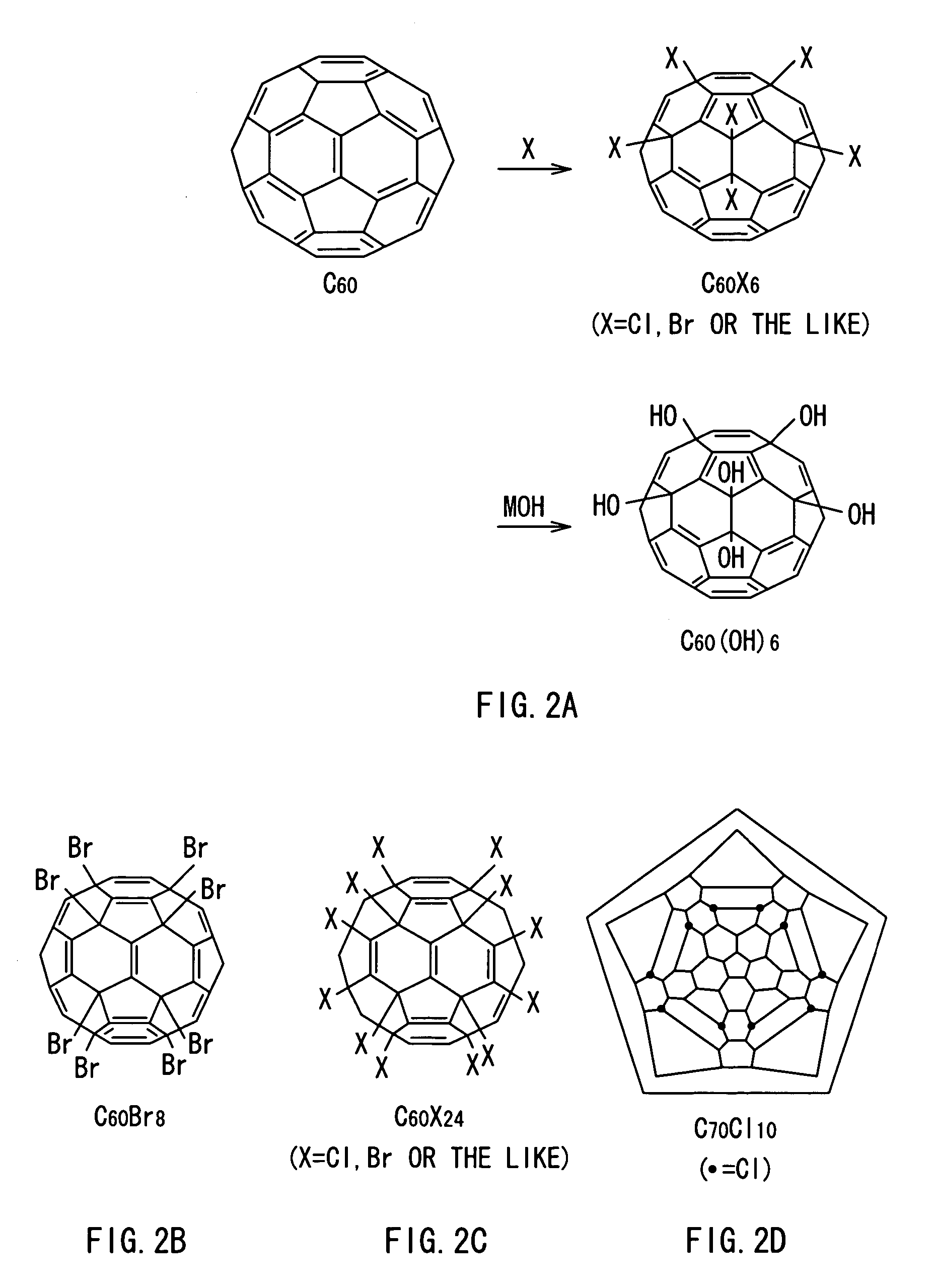Method for fullerene derivative and the fullerene derivative proton conductor and electrochemical device
a proton conductor and fullerene technology, applied in the field of fullerene derivative and fullerene derivative proton conductor and electrochemical device, can solve the problems of narrow operating temperature range, increase in system size and cost, and inability to have a wider temperature range, so as to increase the number of charged carriers and increase the number of proton transfer sites.
- Summary
- Abstract
- Description
- Claims
- Application Information
AI Technical Summary
Benefits of technology
Problems solved by technology
Method used
Image
Examples
Embodiment Construction
[0060]In the present invention, a fullerene molecule as a base into which one or more proton dissociative groups are introduced is not specifically limited, as long as the fullerene molecule is a spherical carbon cluster molecule Cm. However, in general, a fullerene molecule selected from the group of fullerene molecules C36, C60 (refer to FIG. 15A), C70 (refer to FIG. 15B), C76, C78, C80, C82, C84 and so on or a mixture of two or more kinds selected from the fullerene molecules is preferably used.
[0061]Next, examples of a fullerene derivative of the invention and a producing method thereof will be described below.
[0062]FIG. 1 shows an example of a first producing method of the invention. In the method, for example, a fullerene molecule (for example, C60) is reacted with at least one halogen atom X to produce halogenated fullerene C60Xn, and the halogenated fullerene is reacted with hydroxide MOH (that is, nucleophilic substitution reaction) so as to produce a fullerene derivative (...
PUM
| Property | Measurement | Unit |
|---|---|---|
| operating temperature | aaaaa | aaaaa |
| thickness | aaaaa | aaaaa |
| thickness | aaaaa | aaaaa |
Abstract
Description
Claims
Application Information
 Login to View More
Login to View More - R&D
- Intellectual Property
- Life Sciences
- Materials
- Tech Scout
- Unparalleled Data Quality
- Higher Quality Content
- 60% Fewer Hallucinations
Browse by: Latest US Patents, China's latest patents, Technical Efficacy Thesaurus, Application Domain, Technology Topic, Popular Technical Reports.
© 2025 PatSnap. All rights reserved.Legal|Privacy policy|Modern Slavery Act Transparency Statement|Sitemap|About US| Contact US: help@patsnap.com



